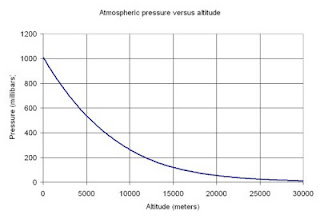The Card
The International Pilot Proficiency Information (IPPI) system is a means for a national association (and its member pilots) to map their ratings system against a common international standard, allowing paraglider and hang glider pilots to travel and not have to worry about qualifying for country specific ratings.
The mapping of ratings to IPPI is done by the national association against a skills index set out by the Federation Aeronautique Internationale (
FAI). The IPPI skills index and resultant ratings can be thought of as a lowest common denominator for the progressive stages of development within a pilots career.
IPPI comes in 5 stages, with 1 being the lowest rating and 5 being the highest.
1. Ground Skimming.
2. Low Level Flight.
3. Soaring in Non-Turbulent Conditions.
4. Soaring in Turbulent Conditions.
5. Cross Country Flight.
A pilot wishing to travel and make use of the IPPI system needs only to contact their national association and request the card (and likely pay a fee).
The association will issue a card with one or both endorsements, SafePro for hang glider pilots and ParaPro for paraglider pilots.
The IPPI card never expires and only requires replacement when a new rating is obtained.
But note that the IPPI card is invalid if not paired with a valid membership from the issuing national association. So while the IPPI card will never expire, an expired membership can and will render the IPPI card invalid.
A pilot planning to travel will quickly realize that the requirements for visiting pilots in any given country will vary greatly. Some countries, such as France, have no specific requirements, while others, such as Switzerland, have stringent ones. There are even site specific requirements. It would be prudent to research where one is planning to fly ahead of time to be aware of what restrictions, if any, exist.
Country specific requirements can be found
here.
HPAC vs. USHPA
Remembering that the IPPI system is a lowest common denominator and that ratings vary from country to country, a pilot with membership in more than one national association can maximize their IPPI rating with a little research (rating 'arbitrage', if you will).
The HPAC Dilemma
HPAC's mapping to IPPI is as follows:
1. Ground Skimming -> Student.
2. Low Level Flight -> Novice.
3. Soaring in Non-Turbulent Conditions -> Intermediate + HAGAR (Hang Glider Air Regulations).
4. Soaring in Turbulent Conditions -> Advanced + HAGAR
5. Cross Country Flight -> Master & Advanced + HAGAR.
Given that most countries that require IPPI, require a minimum of IPPI 4 to be able to fly - it becomes readily apparent that one is not doing a lot of travelling before obtaining their HPAC Advanced Rating, if they wish not to fly 'below the radar'.
Also of note, most of the post graduate training courses offered in Europe in English are taught by British Hang Gliding and Paragliding Association (BHPA) instructors. The BHPA awards an IPPI 3 for their Novice equivalent rating (Club Pilot - CP) and these instructors require it, even to teach basic thermalling to a non-student pilot. A member of HPAC would require their Intermediate (150 flights/25 hours) + the HAGAR endorsement to avail themselves of even these most basic courses.
USHPA to the rescue (somewhat)
A little research turned up that another option exists for Canadian pilots who hold a membership in the United States Hang gliding and Paragliding Association (USHPA).
The USHPA mappings are as follows:
1. Ground Skimming -> P1.
2. Low Level Flight -> P2.
3. Soaring in Non-Turbulent Conditions -> P3 + 5 sites.
4. Soaring in Turbulent Conditions -> P4 OR P3 + TUR
5. Cross Country Flight -> P4 + XC.
The IPPI 3 and 4 ratings are of interest in this case, as the USHPA P3 only requires 90 flights and 20 hours airtime. A Turbulence (TUR) skill sign off would be required for IPPI4, but would be easily acquired by a P3 candidate with mountain flying experience. IPPI 3 with two-thirds the flights and no HAGAR exam and IPPI 4 with half the flights, one fifth the hours, and no HAGAR exam.
The downside of this approach for Canadian pilots is the additional cost of an USHPA membership, but as most Canadian pilots fly Stateside and hold a membership anyways, there would be little cost to utilizing USHPA for IPPI3 and 4 over HPAC.











